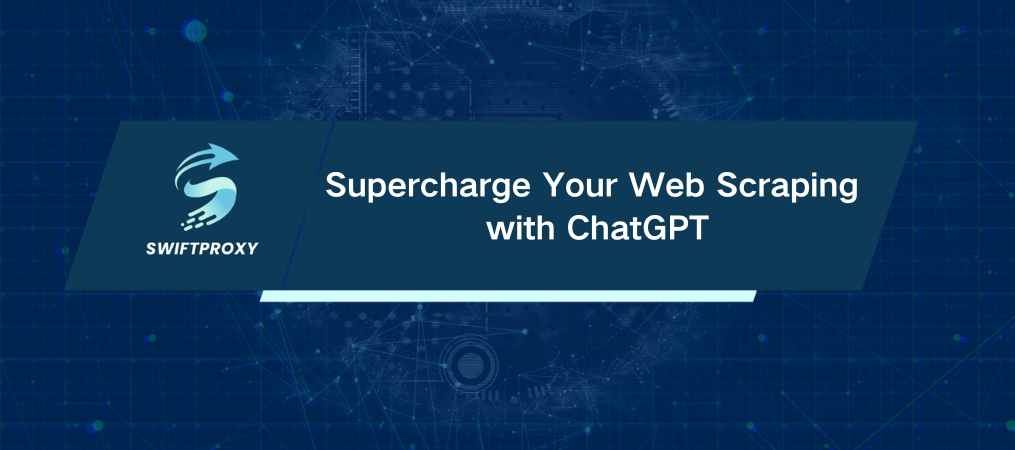Supercharge Your Web Scraping with ChatGPT

"By 2025, the global web scraping market is projected to hit $5 billion." Why? Because data is the fuel driving modern business decisions. And if you're not tapping into it effectively, you're leaving opportunities on the table.
Enter ChatGPT—an AI tool that's transforming how we collect and process data. While it isn't a direct scraper, ChatGPT can be your ultimate assistant for crafting web scraping scripts, even if you're not a coding pro. Ready to supercharge your data collection? Let's dive in.
What Makes ChatGPT a Game-Changer for Web Scraping
ChatGPT, developed by OpenAI, is a language model capable of generating human-like text based on your input. Beyond chat, it excels at simplifying complex tasks like coding. Here's why it's a go-to tool for web scraping:
No Coding Experience Needed: ChatGPT writes scripts for you, making data extraction accessible to everyone.
Customizable Outputs: Get exactly what you need by refining your prompts.
Time-Saving: Generate scripts in minutes instead of hours.
While it can't directly scrape data from websites, ChatGPT creates scripts that automate the process—helping you extract valuable insights from the web quickly and efficiently.
Step 1: Define Your Target Data
Before jumping in, identify the data you want to scrape. Let's use the website Books to Scrape as an example. Say we want to extract book titles and prices in the Philosophy category.
Target URL:
https://books.toscrape.com/catalogue/category/books/philosophy_7/index.html
Next, inspect the HTML structure of the page. Use your browser's Inspect Tool to locate the elements you need:
Titles: ol > li > article > h3 > a
Prices: ol > li > article > div.product_price > p.price_color
These selectors tell your script where to find the data.
Step 2: Craft a ChatGPT Prompt
The magic of ChatGPT lies in its ability to generate precise code—if you give it clear instructions. Here's a sample prompt to get started:
"Write a Python script using the Requests and BeautifulSoup libraries to scrape book titles and prices from https://books.toscrape.com/catalogue/category/books/philosophy_7/index.html. Use the following CSS selectors: Titles: ol > li > article > h3 > a, Prices: ol > li > article > div.product_price > p.price_color. Ensure the script handles character encoding, prints results, and saves them to a CSV file."
Here's the output you'll likely get:
import requests
from bs4 import BeautifulSoup
import csv
# URL to scrape
url = 'https://books.toscrape.com/catalogue/category/books/philosophy_7/index.html'
# Send GET request
response = requests.get(url)
response.encoding = 'utf-8'
soup = BeautifulSoup(response.text, 'html.parser')
# CSS selectors
title_selector = 'ol > li > article > h3 > a'
price_selector = 'ol > li > article > div.product_price > p.price_color'
# Extract data
titles = soup.select(title_selector)
prices = soup.select(price_selector)
books = [(title['title'], price.text) for title, price in zip(titles, prices)]
# Print and save to CSV
csv_file = 'books.csv'
with open(csv_file, 'w', newline='', encoding='utf-8') as file:
writer = csv.writer(file)
writer.writerow(['Title', 'Price'])
writer.writerows(books)
print(f'Data saved to {csv_file}')
Run this code, and voilà! Your data is neatly saved in a CSV file.
Step 3: Set Up Your Environment
Before running the script, ensure your setup is ready:
1. Install Python if you haven't already.
2. Install the required libraries:
pip install requests beautifulsoup4
3. Use an IDE like Visual Studio Code or a simple text editor to write and execute the script.
Step 4: Test and Tweak
Run the script using:
python your_script_name.py
Check the CSV file for accuracy. Are all titles and prices included? If not, refine your CSS selectors or update the ChatGPT prompt to address any issues. ChatGPT can even debug errors for you.
Challenges of Using ChatGPT for Web Scraping
While ChatGPT is a fantastic helper, it has its limits:
1. Anti-Scraping Measures: Websites use CAPTCHAs, rate limiting, and IP bans to block bots. ChatGPT can't bypass these on its own.
2. Dynamic Content: Pages heavily reliant on JavaScript may require advanced tools like Selenium.
3. Ongoing Maintenance: Websites change their structure often, meaning your script might need frequent updates.
Wrapping Up
Web scraping with ChatGPT is a game-changer for beginners and pros alike. It simplifies coding, saves time, and makes data collection more accessible.
However, when the task gets complex, web scraping tools step in to fill the gaps. Whether you're scraping for market research, price monitoring, or competitive analysis, combining AI and robust tools ensures you stay ahead.

















































